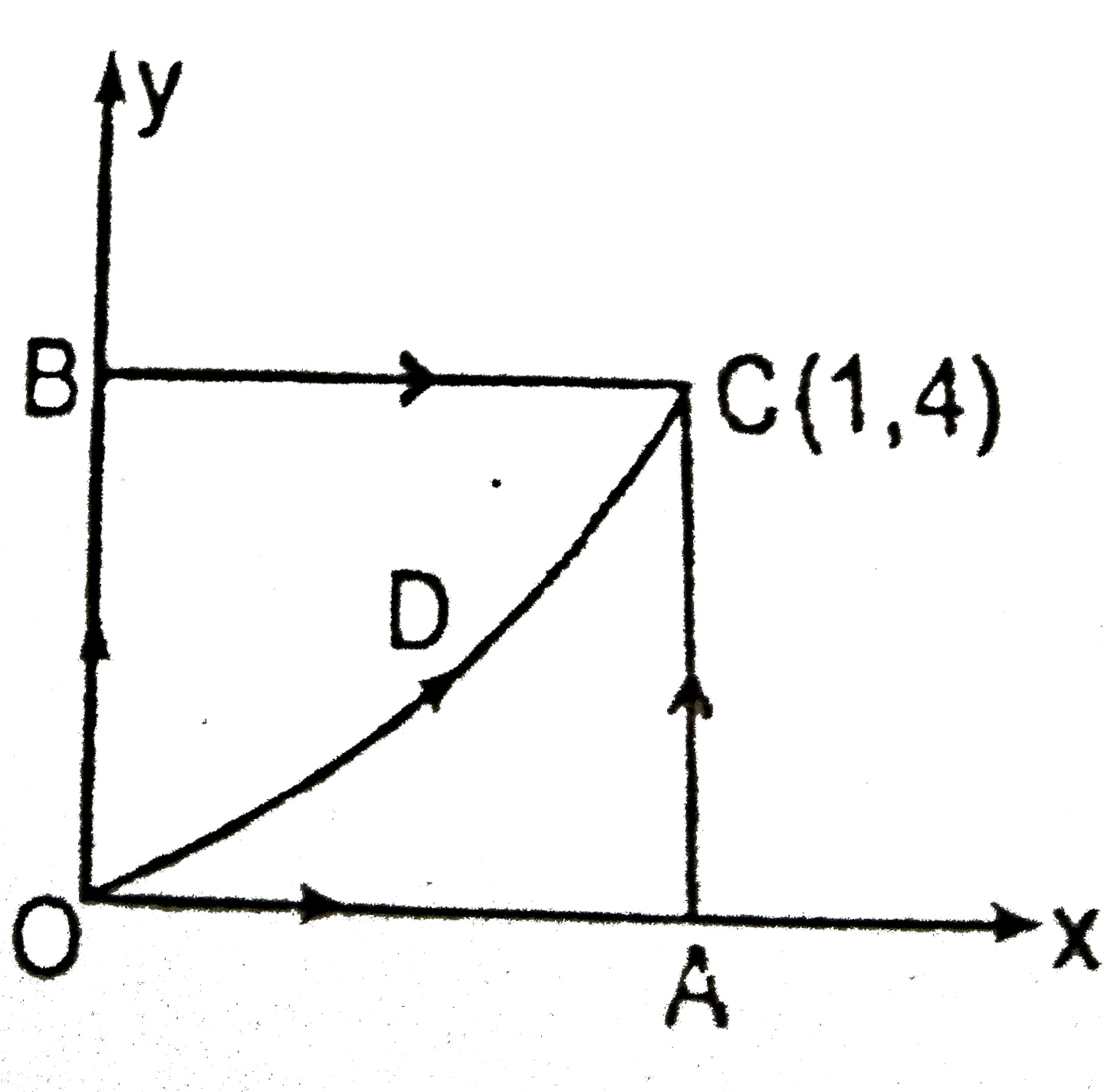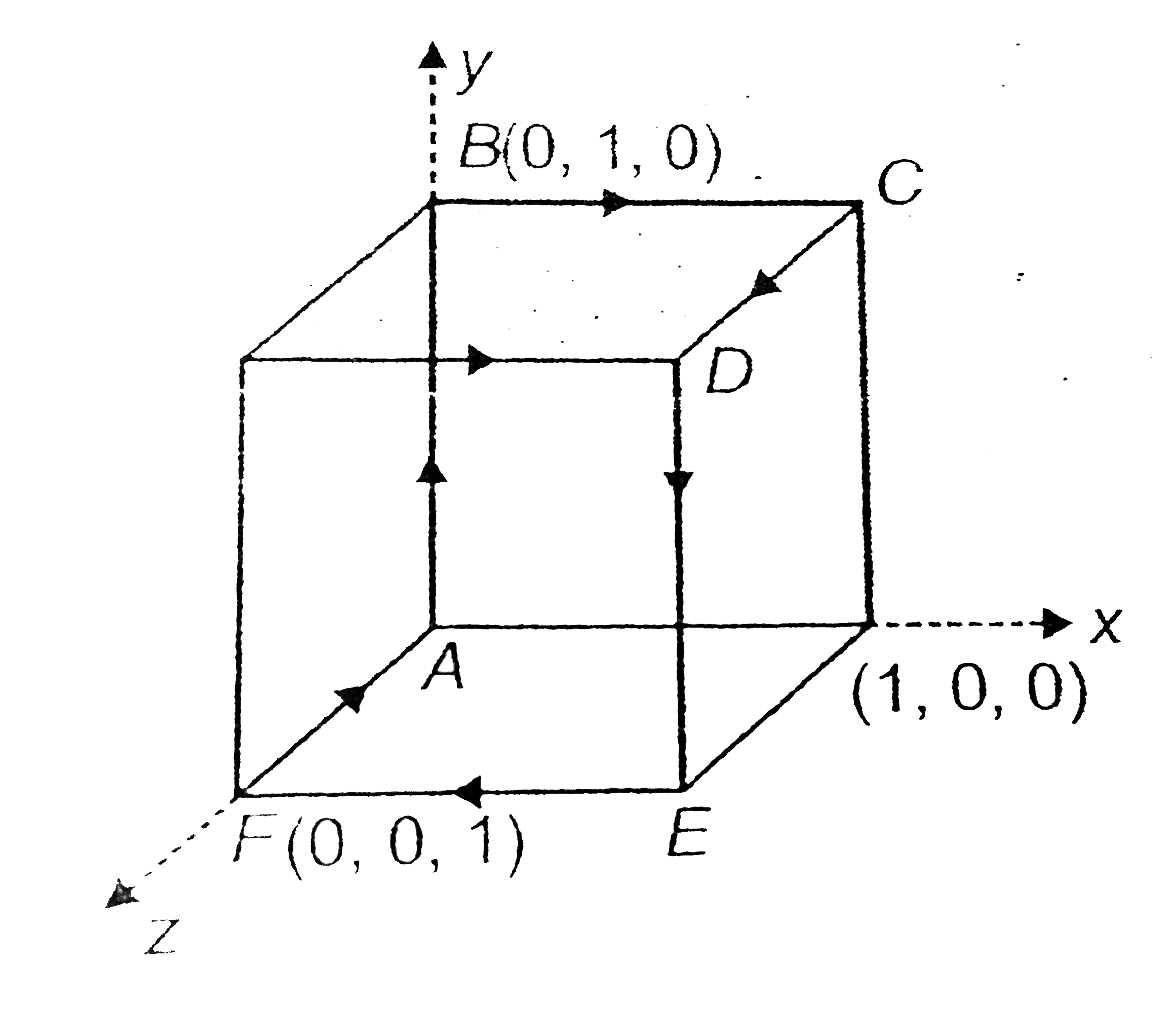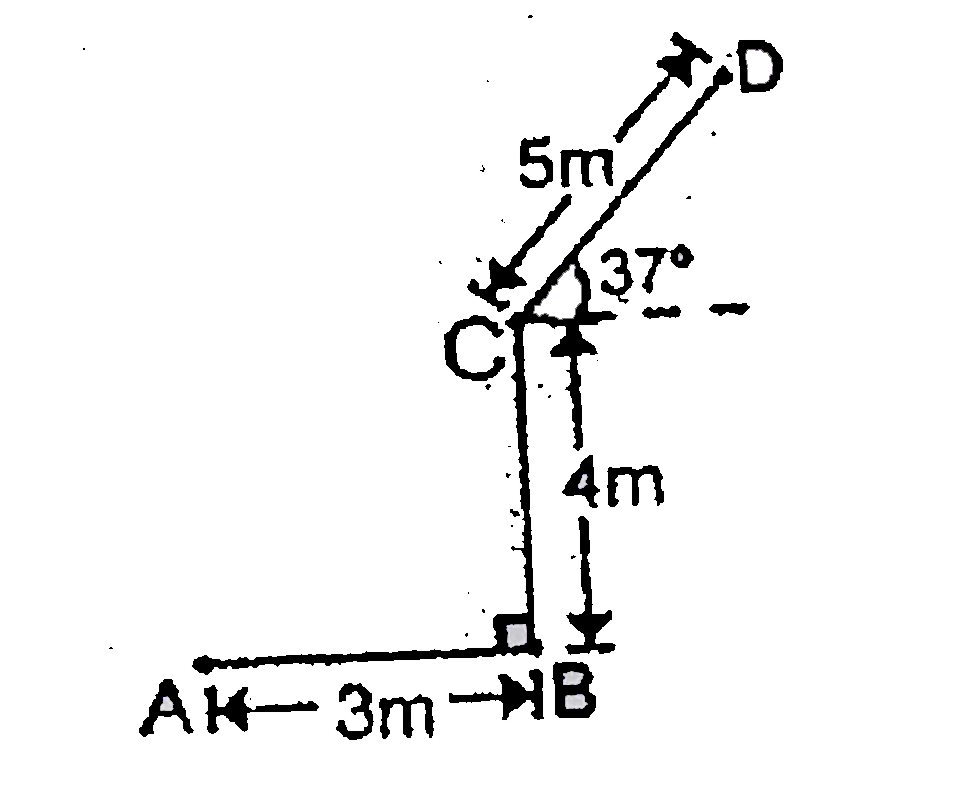A particle is moved along the different paths OAC,OBC&ODC as shown in the figure . Path ODC is a parabola , y=4x2. Find the work done by a forc →F=xyˆi+x2y on the particle along these paths. Is this force a conservative force ?

The correct Answer is:wOAC=8J,wOBC=2J;wODC=19/3j,No
(WF)OAC=∫(xydx+x2ydy)
=A∫0(xydx=x2ydy)+C∫A(xydx+s2ydy)
ON OA path ,
y=0,dy=0 and on AC path
x=1.dx=0
(WF)OAC=A∫0(0.dx+0.dy)+y=4∫y=0(0+1ydy)=8J
(WF)OAC=0+C∫B(xydx+x2ydy)
=1∫x=0{x4x+x24(0)}=2J
=1∫0(x4x2dx+x24x28xdx)=1+326=193J
Topper's Solved these Questions
- BOOK - RESONANCECHAPTER - DAILY PRACTICE PROBLEMSEXERCISE - dpp 405videos
DAILY PRACTICE PROBLEMS
- BOOK - RESONANCECHAPTER - DAILY PRACTICE PROBLEMSEXERCISE - dpp 417videos
DAILY PRACTICE PROBLEMS
- BOOK - RESONANCECHAPTER - DAILY PRACTICE PROBLEMSEXERCISE - dpp 385videos
DAILY PRACTICE PROBLEMS
- BOOK - RESONANCECHAPTER - CURRENT ELECTRICITYEXERCISE - Exercise54videos
CURRENT ELECTRICITY
- BOOK - RESONANCECHAPTER - ELASTICITY AND VISCOCITYEXERCISE - Advanced Level Problems9videos
ELASTICITY AND VISCOCITY
Similar Questions
A particle is moved foom the orgin A, back to the origin, along the path ABCDEFA as shown in figure

(A) Find the work done by the force →F=yˆi+zˆj+xˆk acting on the particle, in the round trip?
(B) Is the force given in part (A) conservative?View SolutionShown that work done by a conservative force on a particle moving between two points is path independent.
View Solution
Knowledge Check
- Question 1 - Select One
The work done by a force →F=(−6x3ˆi) N in displacing a particle from x = 4m to x = - 2m is
A−240JB360JC420JDwill depend upon the path - Question 2 - Select One
A particle moves along a path ABCD as shown in the figure. Then the magnitude of net displacement of the particle from position A to D is:
 A10mB5√2mC9mD7√2m
A10mB5√2mC9mD7√2m - Question 3 - Select One
The work done by the force →F=A(y2ˆi+2x2ˆj), where A is a constant and x & y are in meters around the path shown is :
 AzeroBAdCAd2DAd3
AzeroBAdCAd2DAd3
Calculate the work done by the force →F=yˆi to move the particle from (0,0) to (1,1) in the following condition
(a) y = x (b) y = x2View SolutionA force F is related to the position of a particle by the relation F=(10x2)N . Find the work done by the force when the particle moves from x=2m→x=4m.
View SolutionA particle is moving with a constant speed along a straight line path. A force is not required to
View SolutionA particle moves along the parabolic path y=ax2 in such a The accleration of the particle is:
View SolutionA particle has initial velocity →v=3ˆi+4ˆj and a constant force →F=4ˆi−3ˆj acts on the particle. The path of the particle is :
View Solution

